PRESS RELEASE
|
Date:17 July 1998
Financial Supervisory Agency The Government of Japan |
|
1. Current Status of Risk Management Loans (1) Regarding deposit-taking financial institutions' non-performing loans, each financial institution has disclosed the amount of its bad loans calculated according to the previous standards set by the Zenginkyo (Federation of Bankers Associations of Japan) in September 1995. The Ministry of Finance has, at the same time, announced aggregates of the disclosed bad loans in order to evaluate the magnitude of non-performing loans as a whole. As those figures are calculated using objective standards and as they make a comparison of different financial institutions possible, they are suitable for aggregation. (2) Similarly, the Financial Supervisory Agency ("the Agency") today announced aggregates, as of the end of FY 1997, for Risk Management Loans compiled using the new standards set by the Zenginkyo. The new standards, covering a wider range of non-performing loans, are comparable to the United States SEC standards adopted for the public disclosure of bad loans. Specifically, Risk Management Loans comprise of Past Due Loans in arrears by 3 months or more, and Restructured Loans with changes in terms and conditions, as well as loans to borrowers in legal bankruptcy. According to the previous standards, Past Due Loans and Restructured Loans comprise only those loans in arrears by 6 months or more or those whose interest rate has been reduced below the official discount rate. (3) The total amount of bad loans based on the previous standards steadily decreased from about 27.9 trillion yen the year before to about 25.0 trillion yen. The amount of Risk Management Loans is approximately 35.2 trillion yen, which is the sum of Risk Management Loans held by all banks and previous standard bad loans held by cooperative credit associations. As individual financial institutions undertook thorough write-offs and provisioning for bad loans when closing the books last March, financial institutions as a whole disposed of bad loans of about 15.0 trillion yen including about 9.9 trillion yen provisioned in Special Accounts for Loan Loss Write-Offs. Consequently, the balance of the Special Accounts increased significantly from about 12.3 trillion yen the year before to about 19.0 trillion yen. 2. Result of Banks' Self-Assessment of Asset Quality (1) In view of the deliberation on the Two Bills for Financial Stabilization that was scheduled for the latest session of the Diet, the Ministry of Finance announced last January aggregates of the banks' self-assessments of their asset quality, in order to facilitate public understanding of the banks' non-performing loan problem. Self-assessment is an internal procedure for the proper write-offs and provisioning for bad loans by banks, and was made on a trial basis to prepare for the implementation of Prompt Corrective Action. From March 1998, self-assessment of asset quality by banks officially started within the framework of the Prompt Corrective Action scheme. Within this scheme, the Agency requires from financial institutions to submit a report on their self-assessment with external audit by certified public accountants. (2) The total amount of deposit-taking financial institutions' credit exposures classified as Category II and III are approximately 65.8 trillion yen and 6.1 trillion yen, respectively, as a result of resolute write-offs and provisioning for bad loans at the end of FY 1997. According to trial self-assessments compiled last January, credit exposures classified as Category II, III and IV were about 65.3 trillion yen, 8.7 trillion yen and 2.7 trillion yen, respectively. The self-assessment aggregates announced today are based upon data after banks wrote off or provisioned for their bad loans last March in accordance with the business accounting principles, and therefore does not include those loans classified as Category IV.On the other hand, as self-assessment aggregates announced last January were mostly based on data generated before the banks' write-offs or provisioning, they include loans classified as Category IV which were written off or provisioned. (Note) Credit exposures for self-assessment are categorized as follows: ・ Category I: credit exposures which have not been classified as Categories II, III or IV below; ・ Category II: credit exposures for which banks judge that adequate risk management on an exposure-by-exposure basis will be needed; ・ Category III: credit exposures about which banks have serious concerns in terms of their ultimate collection and thus are likely to incur losses, but banks have difficulties with estimating the timing or amount of the losses they will actually incur; ・ Category IV: credit exposures which banks judge to be non-collectable or of no value. Aggregates of the self-assessment have been compiled on the following assumptions: ・ Each bank makes a self-assessment of asset quality paying due regard to the basic concepts in "The Inspection Guideline on Asset Assessment" made public by Inspection Department as well as submitting to an external audit by certified public accountants when closing the accounts. While Risk Management Loans are based upon objective, standardized and uniform criteria, self-assessment is based upon asset classification standards which each individual banks themselves judge as being appropriate. ・ Category II includes credit exposures for which banks should not incur losses unless they neglect their credit management, eg. loans to companies, including small-sized enterprises, who always make their principal and interest payments on time yet whose accounts are continuously in deficit because of the need for continuous heavy investments to remain competitive. |
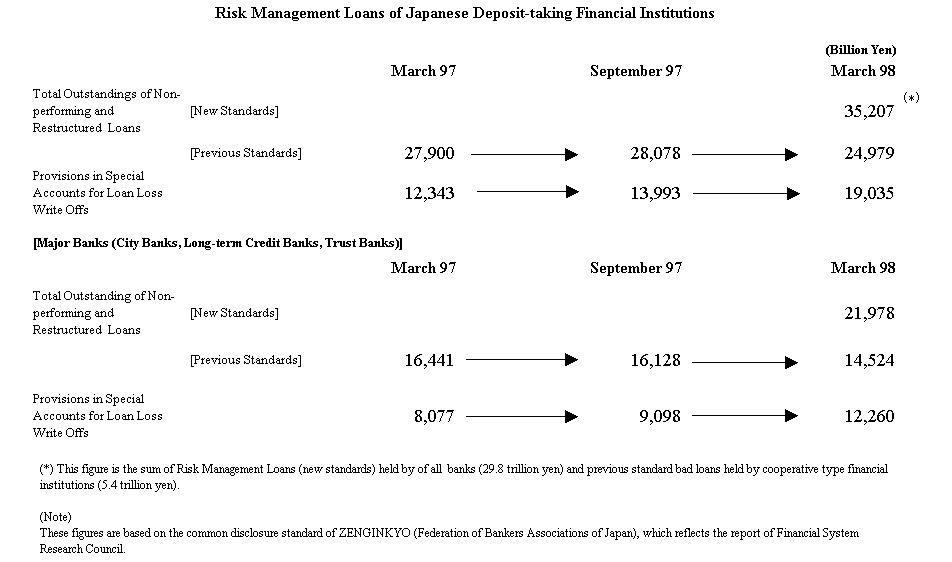
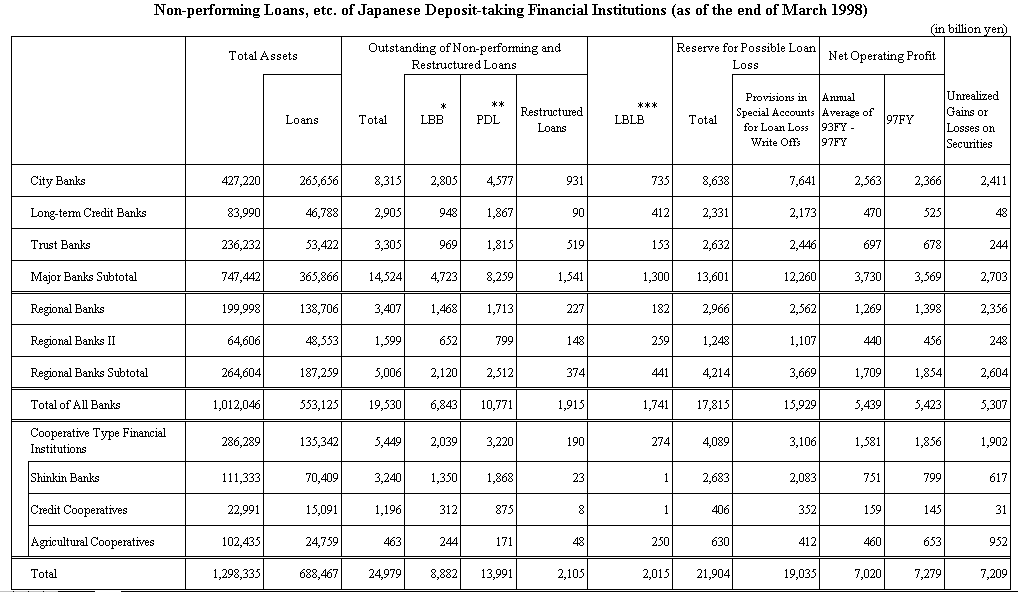

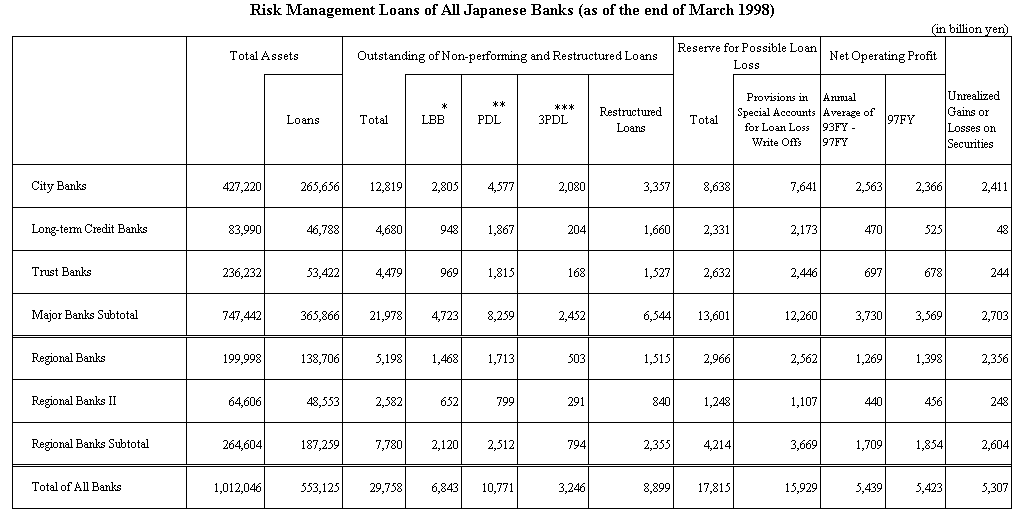

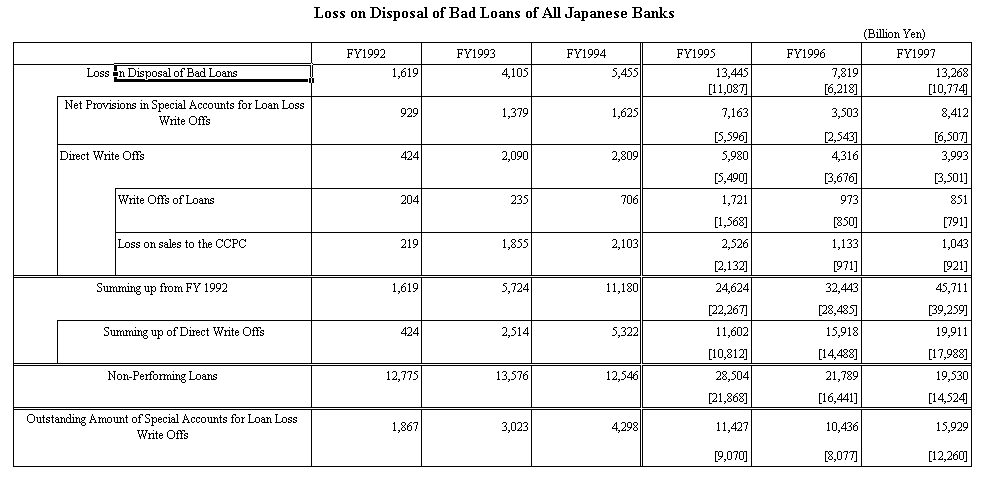

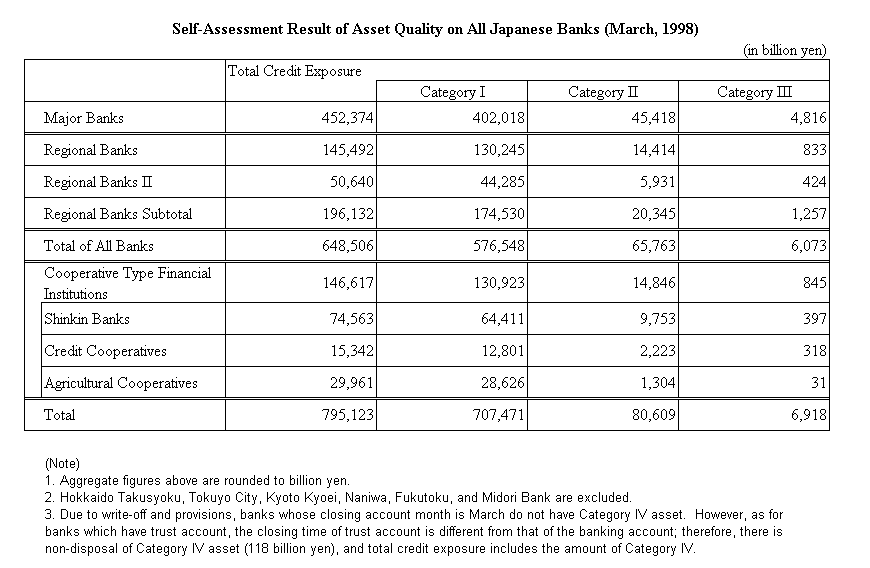
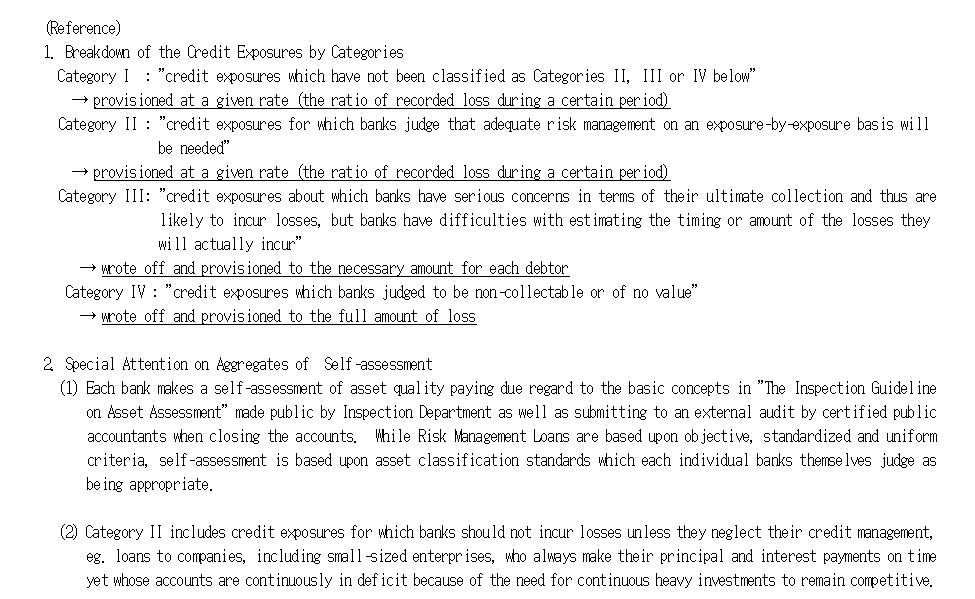

Return